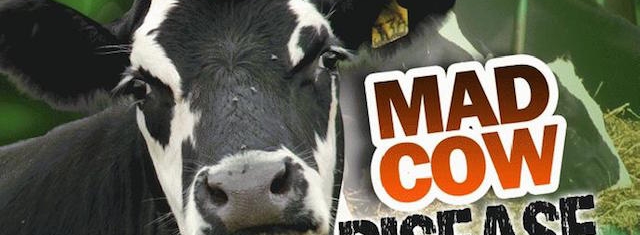Health
Suspicion of a case of bovine spongiform encephalopathy (BSE) in the Ardennes
Mad Cow Disease is back

Mad Cow Disease (Source: Courtesy Laboratoryjam)
USPA NEWS -
There is a suspicion of a case of bovine spongiform encephalopathy (BSE) was detected in a cow Salers breed, after an operation of the Ardennes. The suspicion was established on March 17 by the national laboratory of reference the National Agency of Health Safety (ANSES).
Bovine spongiform encephalopathy (BSE), commonly known as mad cow disease, is a fatal neurodegenerative disease (encephalopathy) in cattle that causes a spongy degeneration of the brain and spinal cord. BSE has a long incubation period, about 2.5 to 8 years, usually affecting adult cattle at a peak age onset of four to five years, all breeds being equally susceptible. BSE is caused by a misfolded protein“”a prion. In the United Kingdom, the country worst affected, more than 180,000 cattle were infected and 4.4 million slaughtered during the eradication program.--------------------------------------------
The disease may be most easily transmitted to human beings by eating food contaminated with the brain, spinal cord or digestive tract of infected carcasses.However, the infectious agent, although most highly concentrated in nervous tissue, can be found in virtually all tissues throughout the body, including blood. In humans, it is known as new variant Creutzfeldt““Jakob disease (vCJD or nvCJD), and by June 2014 it had killed 177 people in the United Kingdom, and 52 elsewhere. Between 460,000 and 482,000 BSE-infected animals had entered the human food chain before controls on high-risk offal were introduced in 1989.-------------------------------------------------------------------------------------------------------------------------
SUSPICIION IN ARDENNES FRENCH REGION RELEASED BY MINISTRY OF AGRICULTURE---------------------------
The suspicion was established on March 17 by the national laboratory of reference the National Agency of Health Safety (ANSES), with samples taken from the animal to rendering.-------------------------------------------------------------------------------
The samples were sent today to the reference laboratory of the European Union (EU-RL) in order to have a confirmation of the result of the analysis. The result should be available within 8 to 10 days. An epidemiological investigation has also been launched to gather information to better understand the origin of the disease if it was confirmed.-----------------------------------
A prefectural order to impose surveillance (APMS) the herd was taken this morning by the Prefect of the Ardennes. French Ministry of Agriculture
French Minister Of Agriculture Stephane Le Foll Bovine Spongiform Encephalopathy Mad Cow Disease Ardennes France Rahma Sophia Rachdi
Liability for this article lies with the author, who also holds the copyright. Editorial content from USPA may be quoted on other websites as long as the quote comprises no more than 5% of the entire text, is marked as such and the source is named (via hyperlink).







